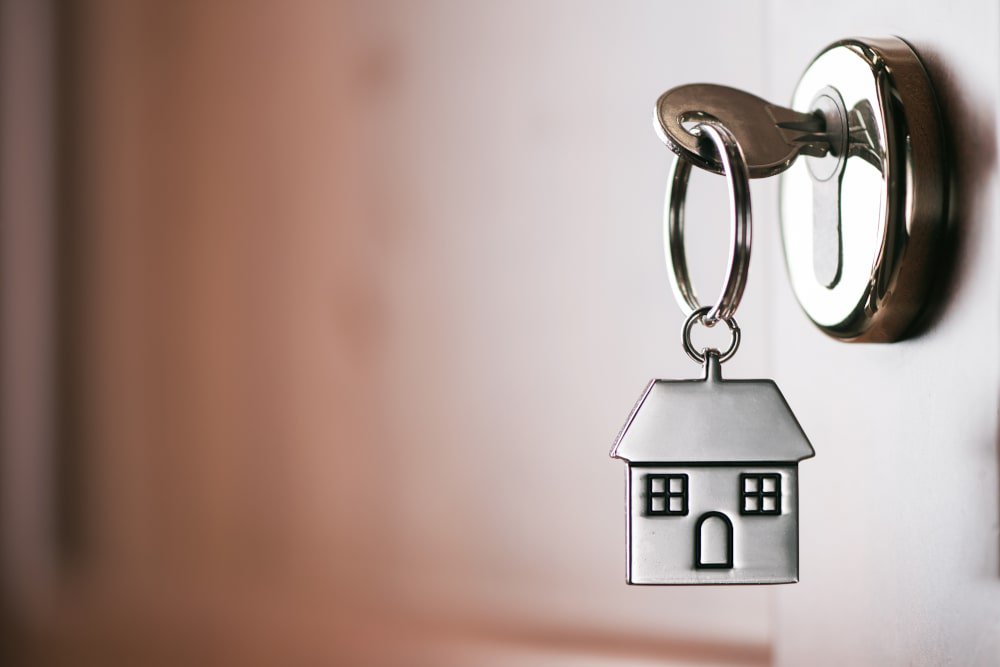What Down payment Do You Need for a Second Home in Ontario?

Canadians' appetite for owning a second home, whether it's a secondary residence, a vacation property or an investment, has been on a steady rise in recent years. In fact, according to a 2021 report by RE/MAX , the demand for recreational properties in Ontario saw a staggering 100% increase compared to the previous year.
As the dream of owning a second home becomes a reality for many, it's crucial to understand the financial requirements, especially when it comes to the all-important down payment.
Key Takeaways
- The minimum down payment for a second home in Ontario starts at 5% for properties valued at $500,000 or less.
- For properties valued between $500,000 and $1,000,000, the down payment calculation is slightly more complex, starting at 5% for the first $500,000 and 10% for the remaining balance.
- Mortgage default insurance, typically ranging from 3% to 4% of the mortgage balance, is mandatory for down payments below 20%.
- A larger down payment of 20% or more can eliminate the need for mortgage insurance, potentially saving thousands of dollars.
- Factors like credit score, debt levels, and income stability play a crucial role in determining your eligibility for mortgage default insurance and the associated rates.
As President and Principal Broker at Clover Mortgage, I've witnessed firsthand the growing trend of Canadians investing in second homes, whether it's for personal enjoyment, rental income, or a combination of both. While the allure of owning a getaway or an income-generating rental property is undeniable, navigating the financial landscape can be daunting, especially when it comes to determining the appropriate down payment.
In this comprehensive guide, I'll break down the intricacies of down payment requirements for second homes in Ontario, particularly:
- What is the Minimum Down Payment for Second Home?
- Mortgage Insurance
- When Else do You Not Need Insurance?
- What Does Mortgage Insurance Cost?
- Benefits of a Larger Down Payment
- Implications of Low Down Payments
- What About a Standard 20% Down Payment?
- Exploring Alternative Financing Options
- Additional Costs to Consider
What is the Minimum Down Payment for Second Home?
To get a second mortgage for a property in Ontario, you will need to make a minimum down payment based on the purchase price of the home. The down payment requirements are as follows:
| Purchase Price | Minimum Down Payment |
|---|---|
| $500,000 or less | 5% of the purchase price |
| 500,001−999,999 | 5% of the first $500,000 + 10% of the remaining balance |
| $1,000,000 or more | 20% of the purchase price |
Here are a few examples to illustrate the calculations:
-
For a $300,000 property:
- Minimum down payment = 5% of 300,000=300,000=15,000
-
For a $750,000 property:
- 5% of the first 500,000=500,000=25,000
- 10% of the remaining 250,000=250,000=25,000
- Total minimum down payment = 25,000+25,000+25,000 = $50,000
-
For a $1,200,000 property:
- Minimum down payment = 20% of 1,200,000=1,200,000=240,000
Mortgage Insurance
Mortgage insurance is another value you need to factor into the cost of getting a new mortgage. Mortgage insurance is meant to protect lenders when borrowers fail to meet their repayment obligations. That's why it's often referred to as mortgage default insurance.
However, in order to qualify for mortgage default insurance , the insurer requires the borrower to qualify with a minimum credit score profile and a maximum GDS and TDS ratio that is not negotiable. If you're self-employed and do not declare enough income, have a lot of existing debt, or have a bad credit score, you may not qualify for mortgage default insurance and may be required to come up with at least 20% or go with a private lender who would accept as little as 10% or 15%, but those are hard to come across and can be very expensive to borrow from.
If you make a bare minimum mortgage down payment, you will have to purchase mortgage insurance. The only way out of paying mortgage insurance is by making a down payment of 20% or more.
In some cases, lenders might not require mortgage default insurance if the down payment is less that 20%, but this is primarily isolated to private lenders who will close on a mortgage of purchase price more than 80% loan to value.
When Else do You Not Need Insurance?
As mentioned previously, mortgage insurance is unavailable for homes valued at over $1 million. Also, if, for whatever reason, investment property or the mortgage you apply for doesn't meet any insurance companies' minimum standards, you cannot get it insured.
What Does Mortgage Insurance Cost?
CMHC, Sagen, and Canada Guaranty insurance normally costs about 3% to 4% of the value of a mortgage. It's paid for in full by the borrower at the start of the mortgage.
CMHC and the other two companies are all mortgage default insurance providers in Canada. This insurance is necessary for all mortgages in Canada with a down payment of less than 20%. It's an additional cost for homebuyers and normally costs 3% to 4% of the mortgage's balance. While it's somewhat expensive, it allows many homebuyers to buy first or second homes with down payments that are more affordable. Without CMHC, interest rates for mortgages with very low down payment would be much higher and only available through certain private lenders in certain areas.
Benefits of a Larger Down Payment
While the minimum down payment requirements may seem enticing, there are significant advantages to putting down a larger sum, especially 20% or more. Here's why:
- Avoiding Mortgage Default Insurance: By putting down 20% or more, you eliminate the need for mortgage default insurance, potentially saving you thousands of dollars in premiums.
- Lower Interest Rates: Lenders typically offer their lowest interest rates to borrowers with down payments of 25% or more, as they perceive these borrowers as lower-risk.
- Reduced Monthly Payments: A larger down payment translates to a smaller mortgage amount, resulting in lower monthly payments over the life of the loan.
- Increased Equity: With a higher down payment, you start off with more equity in your second home, which can be advantageous if you plan to leverage the property for future financial endeavors, such as a home equity line of credit (HELOC) or a cash-out refinance .
Implications of Low Down Payments
Down payments of less than 20% are lower than average. In theory, lenders who accept down payments this small are exposed to high interest debt due to more risk. However, CMHC insurance changes the dynamic.
Because the lender is protected in the case of default, these low down payment mortgages are less risky for them. With less associated risk, lenders can often offer better rates for insured mortgages. However, it's up to the borrower to balance the costs of insurance and reverse mortgage against the costs of an uninsured loan.
What About a Standard 20% Down Payment?
Down payments of 20% land right at the cut-off line for mandatory mortgage default insurance, such as CMHC insurance. So, 20% is the lowest possible down payment that can be made without insurance, and without having to potentially turn to a private lender. This puts lenders in a more risky spot than a 30% down payment. It's the most risk they can assume on their own because they aren't protected from defaults. Both lenders and borrowers also don't benefit from the lower risk of mortgages with down payments above 30%.
For these reasons, down payments right on the 20% mark might be slightly more expensive. However, it's the standard mortgage down payment. It's normally still better for borrowers, as it beats most mortgage rates and lower alternatives from B-lenders such as Credit Unions and Trust Companies. Down payments of slightly less than 20% can easily end up costing the borrower significantly more. Because the 3% to 4% CMHC payments are upfront, many borrowers feel better off paying 20% and slowly paying off the rest of their mortgage.
Last but not least, 20% is the cut-off line for a 30-year amortization. Any down payment of less than 20% makes insurance requirements for a 30-year amortization unavailable, which will increase your monthly payments since an insured mortgage can only be amortized over a maximum of 25 years.
Exploring Alternative Financing Options
While the traditional route of securing a mortgage through a bank or a prime lender is the most common approach, it's not the only option. Depending on your circumstances, you may need to explore alternative financing options, especially if you face challenges qualifying for mortgage default insurance or meeting the minimum down payment requirements.
- Private Lenders: These lenders operate outside the traditional banking system and may be more flexible with their lending criteria. However, they typically charge higher interest rates and fees to compensate for the higher risk they assume.
- Home Equity Line of Credit (HELOC): If you have substantial equity built up in your primary residence, you may be able to leverage a HELOC to fund the down payment on your second home. This option allows you to tap into the equity you've already accumulated without having to sell your existing property.
- Family Assistance: In some cases, family members may be willing to provide financial support, either in the form of a gift or a loan, to help you secure the necessary down payment.
Additional Costs to Consider
While the down payment for second property is often the most significant upfront expense, it's crucial to factor in other costs associated with purchasing a second home. These may include:
- Legal fees
- Property taxes
- Utility costs
- Maintenance and repair expenses
- Homeowners' association fees (if applicable)
- Potential rental management fees (if you plan to rent out the property)
By budgeting for these additional expenses, you'll have a more accurate picture of the true cost of ownership and can plan accordingly.
FAQ
Can I use the equity from my principal residence as a down payment for a second home?
Yes, you can leverage the equity in your principal residence through a home equity line of credit (HELOC) or a cash-out refinance to fund the down payment for a second home. This can be a viable option if you have built up substantial equity in your primary residence.
Are the down payment requirements different for an investment property compared to a second home?
Generally, the down payment requirements are similar for both second homes and investment properties. However, some lenders may have slightly different criteria or additional requirements for investment properties, as they are considered a higher risk.
Can I rent out my second home to generate rental income?
Yes, you can certainly rent out your second home to generate rental income. However, it's important to inform your mortgage lender about your intention to use the property as a rental, as this may impact the lending terms and conditions.
How can I minimize my mortgage payments for a second home?
To minimize your mortgage payments, you can make a larger down payment (at least 20% to avoid mortgage default insurance), negotiate for a lower interest rate with your lender, or explore extended amortization periods (if eligible).
Will a larger down payment help me save on interest paid over the life of the mortgage?
Yes, a larger down payment typically results in a lower overall interest paid throughout the mortgage term. This is because you are borrowing less money, and the interest is calculated based on the remaining mortgage balance.
What options are available if I don't qualify for a traditional mortgage for my second home?
If you don't qualify for a traditional mortgage, you may need to explore alternative mortgage solutions, such as private lenders, second mortgages, or reverse mortgages (if you are a homeowner over the age of 55). These options often come with higher interest rates and fees, but they can provide financing when traditional lenders are unwilling to lend.
How can a mortgage specialist help me find the right mortgage solutions for a second home?
A mortgage specialist, like those at Clover Mortgage, can provide valuable guidance and expertise in navigating the complexities of second home financing. They can assess your unique situation, explore all available options, and help you secure the best mortgage solution that aligns with your financial goals and requirements.
What additional costs should I expect when purchasing a second home?
In addition to the down payment, you should be prepared for closing costs, such as legal fees, land transfer taxes, and other administrative fees. Other ongoing expenses may include property taxes, utility costs, maintenance and repair expenses, and potentially rental management fees if you plan to rent out the property.
How can I budget effectively for the purchase of a second home?
When budgeting for a second home, it's crucial to consider not only the down payment and mortgage payments but also the additional closing costs, ongoing expenses (property taxes, utilities, maintenance), and any potential rental income (if applicable). Working with a mortgage specialist can help you create a comprehensive financial plan and ensure you account for all associated costs.
Seeking Professional Guidance
Looking for the right mortgage with the right down payment for a second home? Clover Mortgage helps individuals and families in Ontario find the right mortgage solutions. Our focus is on helping our clients by providing professional advice and guidance. We can walk you through the process of financing a second home so you can get the lowest rates for a loan that suits your personal needs.





